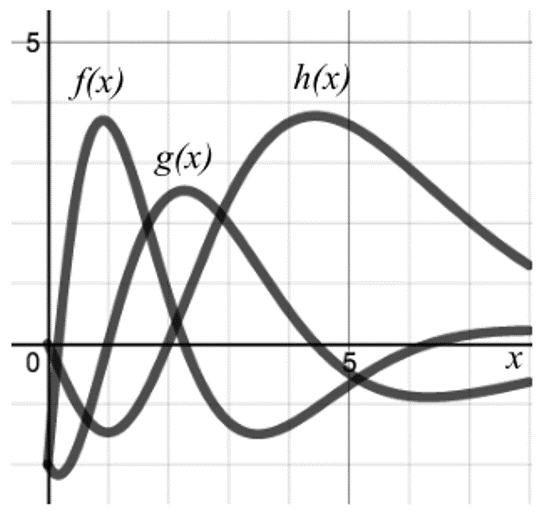Science:Math Exam Resources/Courses/MATH102/December 2015/Question 01
{{#incat:MER QGQ flag|{{#incat:MER QGH flag|{{#incat:MER QGS flag|}}}}}}
• Q1 • Q2 • Q3 • Q4 • Q5 • Q6 • Q7 • Q8 • Q9 • Q10 (a) • Q10 (b) • Q11 • Q12 • Q13 • Q14 (a) • Q14 (b) • Q15 • Q16 • Q17 • Q18 (a) • Q18 (b) • Q18 (c) • Q18 (d) • Q19 (a) • Q19 (b) • Q19 (c) • Q19 (d) • Q19 (e) •
Question 01 |
|---|
|
According to the graphs in the figure below, which of the following is true?
(b) (c) (d) |
|
Make sure you understand the problem fully: What is the question asking you to do? Are there specific conditions or constraints that you should take note of? How will you know if your answer is correct from your work only? Can you rephrase the question in your own words in a way that makes sense to you? |
|
If you are stuck, check the hint below. Consider it for a while. Does it give you a new idea on how to approach the problem? If so, try it! |
Hint |
|---|
|
All local maxima and minima on a function's graph occur at critical points of the function. |
|
Checking a solution serves two purposes: helping you if, after having used the hint, you still are stuck on the problem; or if you have solved the problem and would like to check your work.
|
Solution |
|---|
|
By the hint, all local maxima and minima on a function's graph occur at critical points of the function. (i.e., the derivative vanishes at these points.) Since at the local local extrema of the function , the function vanishes, we expect . Indeed, on the interval where increases, the function values of are positive, while on the intervals where decreases, the values are negative. This is consistent with the the statement that . In a similar way, we can find because at the local local extrema of the function , the function vanishes, and the intervals where has positive(negative) sign also match with the intervals where increases(decreases). In sum, we have . Answer: . |
{{#incat:MER CT flag||
}}














